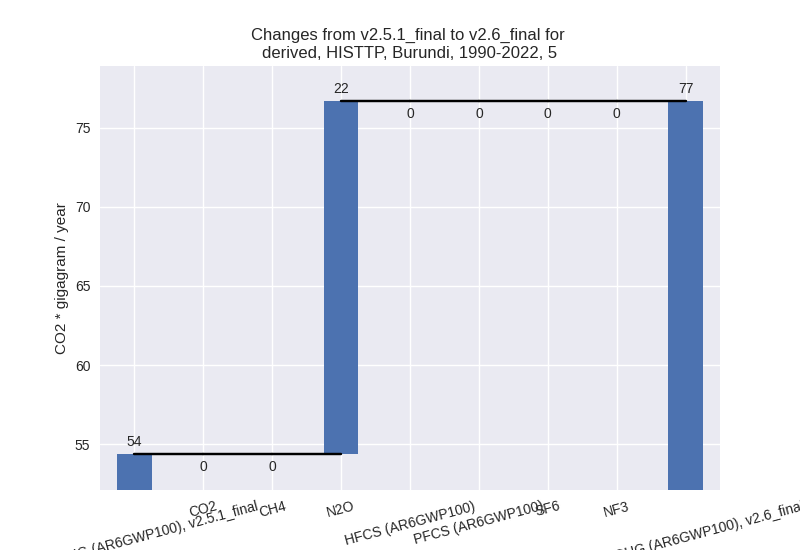Changes in PRIMAP-hist v2.6_final compared to v2.5.1_final for Burundi
2024-09-24
Johannes Gütschow
Change analysis for Burundi for PRIMAP-hist v2.6_final compared to v2.5.1_final
Overview over emissions by sector and gas
The following figures show the aggregate national total emissions excluding LULUCF AR6GWP100 for the country reported priority scenario. The dotted linesshow the v2.5.1_final data.
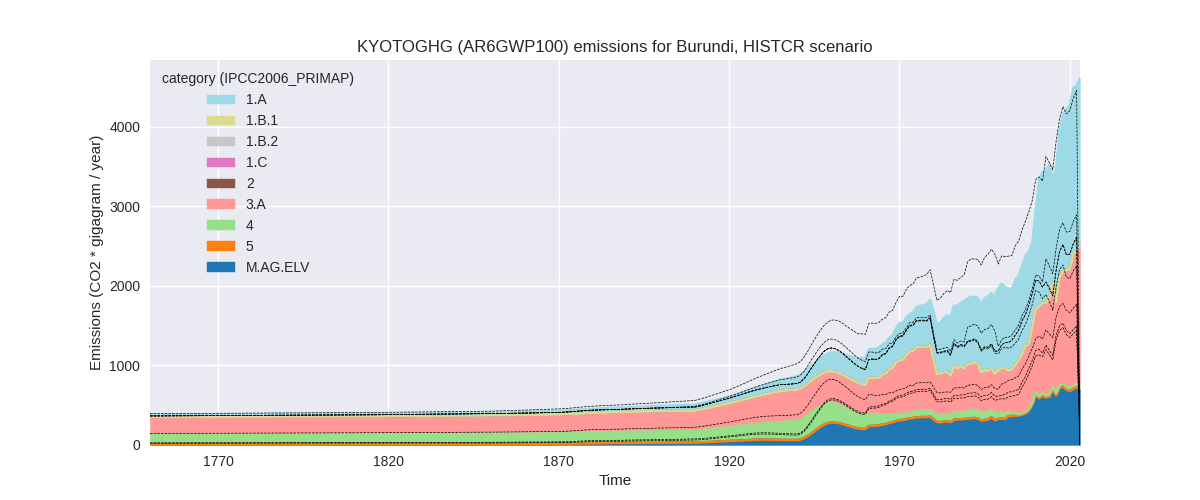

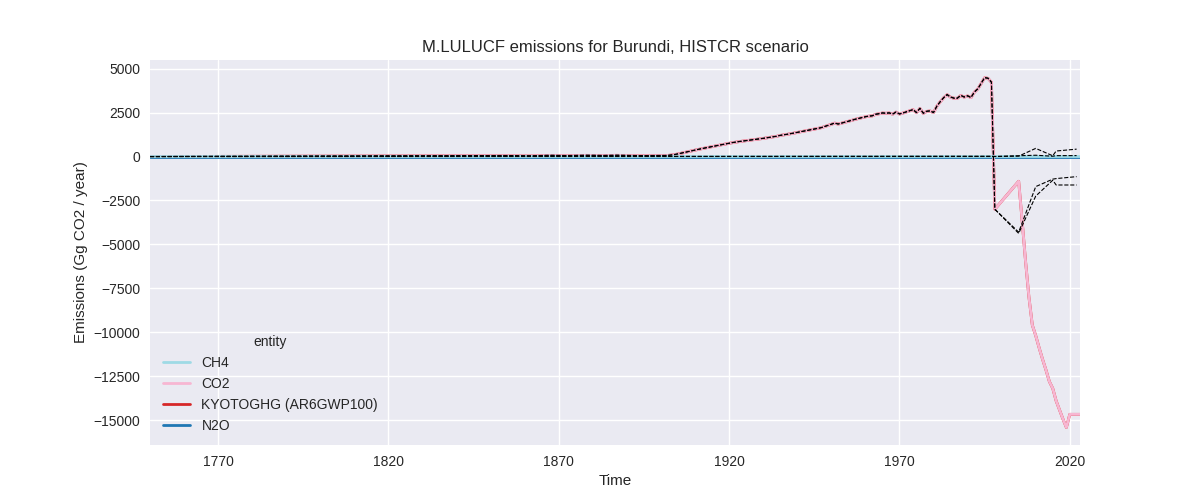
The following figures show the aggregate national total emissions excluding LULUCF AR6GWP100 for the third party priority scenario. The dotted linesshow the v2.5.1_final data.
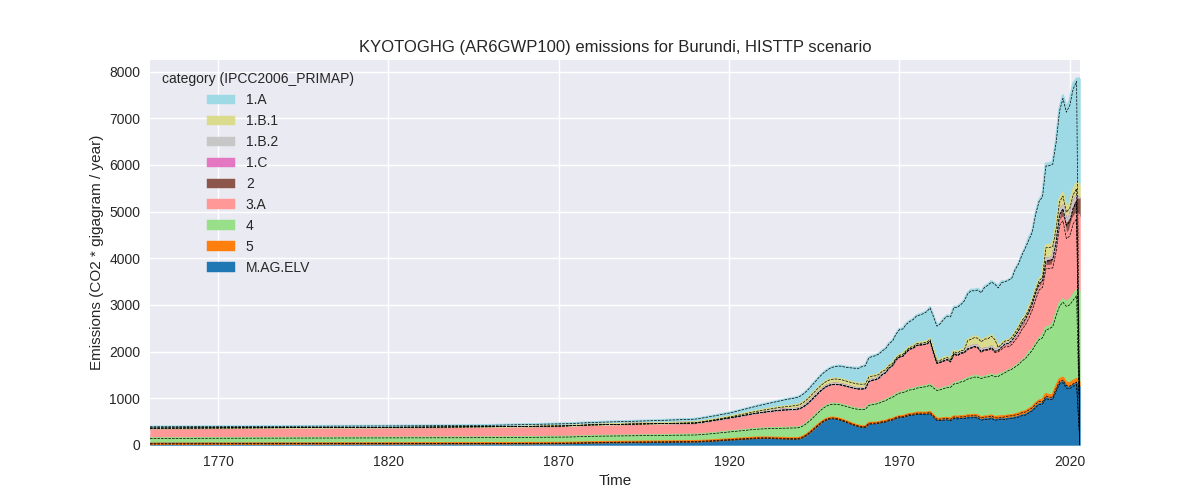
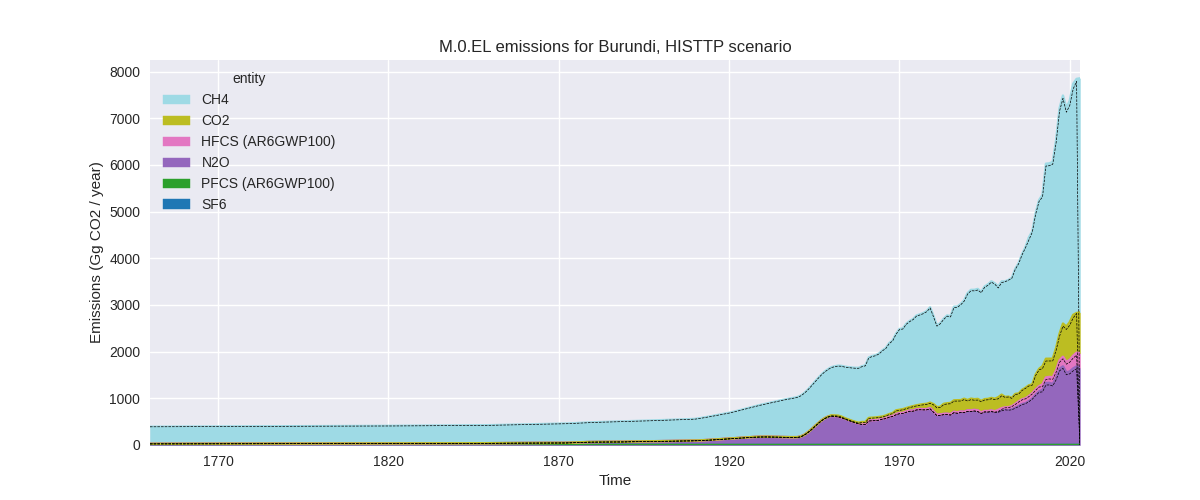

Overview over changes
In the country reported priority scenario we have the following changes for aggregate Kyoto GHG and national total emissions excluding LULUCF (M.0.EL):
- Emissions in 2022 have changed by 1.4%% (61.63 Gg CO2 / year)
- Emissions in 1990-2022 have changed by -10.2%% (-306.40 Gg CO2 / year)
In the third party priority scenario we have the following changes for aggregate Kyoto GHG and national total emissions excluding LULUCF (M.0.EL):
- Emissions in 2022 have changed by 0.7%% (56.38 Gg CO2 / year)
- Emissions in 1990-2022 have changed by 0.7%% (34.53 Gg CO2 / year)
Most important changes per scenario and time frame
In the country reported priority scenario the following sector-gas combinations have the highest absolute impact on national total KyotoGHG (AR6GWP100) emissions in 2022 (top 5):
- 1: 3.A, CH4 with 1088.72 Gg CO2 / year (304.5%)
- 2: M.AG.ELV, N2O with -583.67 Gg CO2 / year (-50.1%)
- 3: 1.A, CH4 with 449.59 Gg CO2 / year (42.2%)
- 4: 2, HFCS (AR6GWP100) with -291.05 Gg CO2 / year (-100.0%)
- 5: 1.B.1, CH4 with -278.81 Gg CO2 / year (-100.0%)
In the country reported priority scenario the following sector-gas combinations have the highest absolute impact on national total KyotoGHG (AR6GWP100) emissions in 1990-2022 (top 5):
- 1: M.AG.ELV, N2O with -353.96 Gg CO2 / year (-49.9%)
- 2: 3.A, CH4 with 349.61 Gg CO2 / year (80.8%)
- 3: 1.B.1, CH4 with -167.95 Gg CO2 / year (-100.0%)
- 4: 1.A, CH4 with 124.73 Gg CO2 / year (14.7%)
- 5: 2, HFCS (AR6GWP100) with -96.21 Gg CO2 / year (-100.0%)
In the third party priority scenario the following sector-gas combinations have the highest absolute impact on national total KyotoGHG (AR6GWP100) emissions in 2022 (top 5):
- 1: 1.A, CO2 with -59.56 Gg CO2 / year (-7.2%)
- 2: 5, N2O with 47.04 Gg CO2 / year (88.4%)
- 3: 4, CH4 with 44.71 Gg CO2 / year (2.6%)
- 4: M.AG.ELV, CO2 with 13.87 Gg CO2 / year (inf%)
- 5: 2, HFCS (AR6GWP100) with 4.26 Gg CO2 / year (1.5%)
In the third party priority scenario the following sector-gas combinations have the highest absolute impact on national total KyotoGHG (AR6GWP100) emissions in 1990-2022 (top 5):
- 1: 5, N2O with 22.28 Gg CO2 / year (41.0%)
- 2: 4, CH4 with 6.06 Gg CO2 / year (0.5%)
- 3: 4, N2O with 4.22 Gg CO2 / year (6.5%)
- 4: M.AG.ELV, CO2 with 2.75 Gg CO2 / year (inf%)
- 5: 1.A, CO2 with -1.84 Gg CO2 / year (-0.6%)
Notes on data changes
Here we list notes explaining important emissions changes for the country. ’' means that the following text only applies to the TP time series, while means that it only applies to the CR scenario. Otherwise the note applies to both scenarios.
- We have added data from BUR1 which introduce changes in most categories / gases for the CR time-series. Some of the main changes are explained below.
- For 3.A, CH4 the BUR1 estimates much higher emissions. This impacts 2022 and cumulative emissions.
- For M.AG.ELV, N2O - BUR1 estimates lower emissions than FAOSTAT which was used before.
- 1.A, CH4 - emissions increased in BUR1. BUR1 values for 2005, 2010, and 2015 were taken from previous reports and do not match with other values
- HFCs are all zero in BUR1 and thus 0 in the CR scenario
- CH4 emissions in 1.B.1 are all zero in BUR1
- Many changes in the TP scenario are due to data from BUR1 which provides data for sector-gas combinations which didn’t have data before
Changes by sector and gas
For each scenario and time frame the changes are displayed for all individual sectors and all individual gases. In the sector plot we use aggregate Kyoto GHGs in AR6GWP100. In the gas plot we usenational total emissions without LULUCF. ## country reported scenario
2022

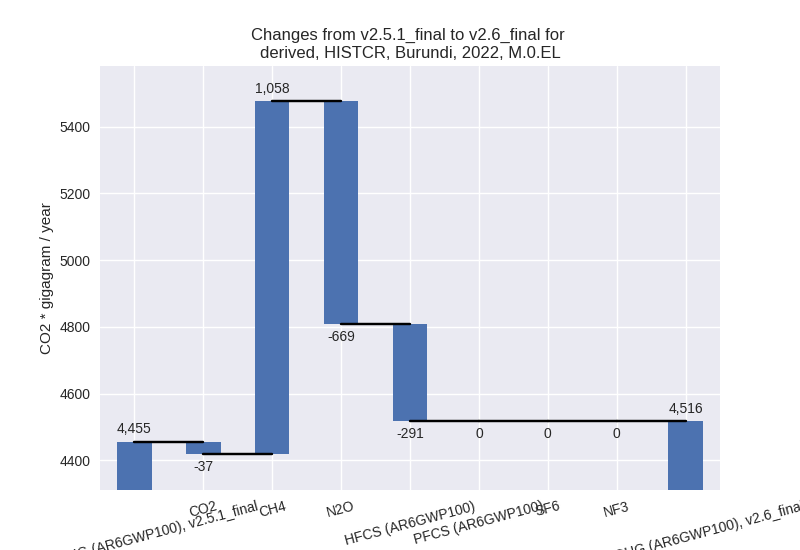
1990-2022
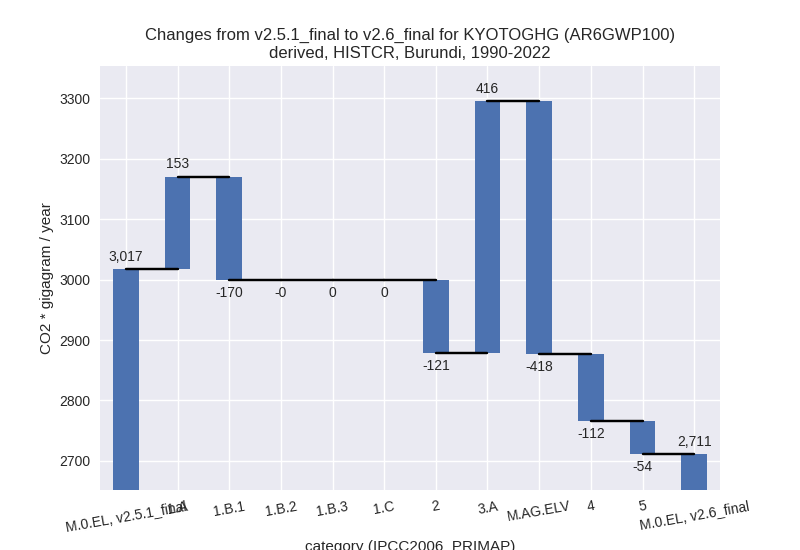
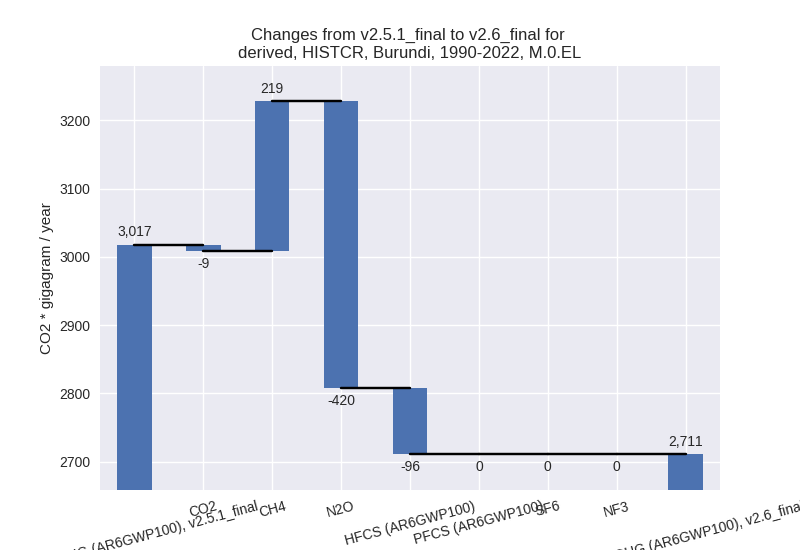
third party scenario
2022
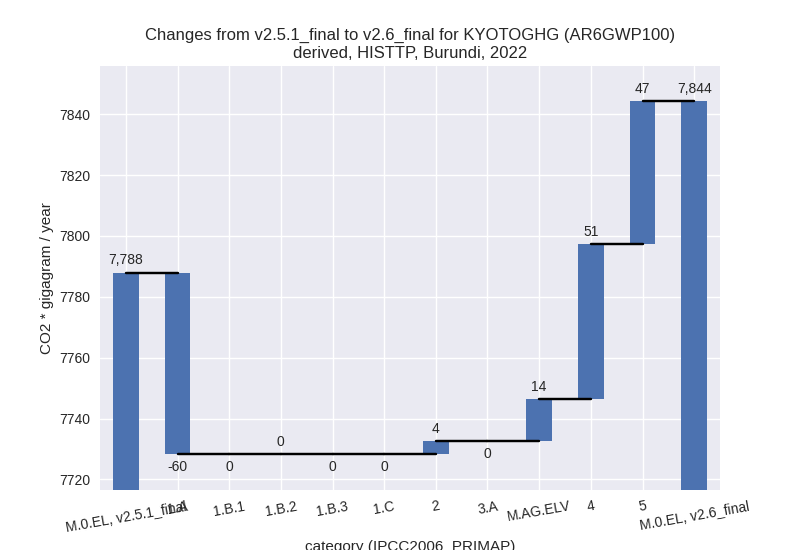
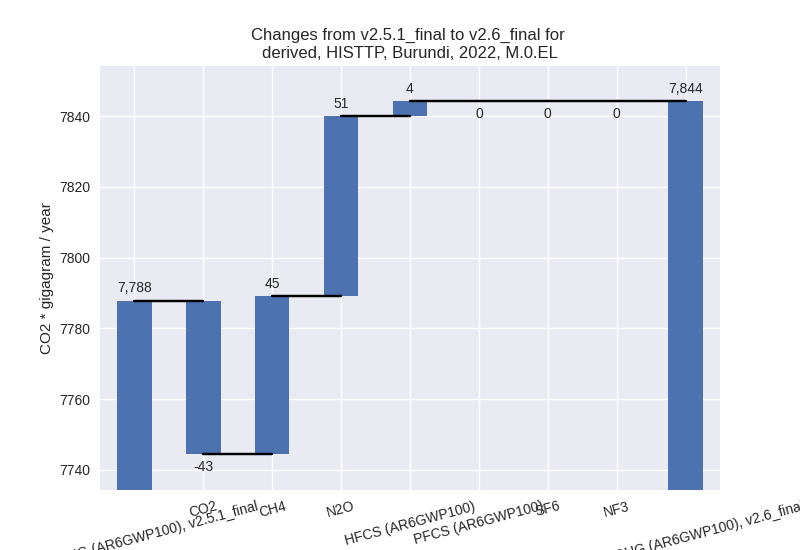
1990-2022
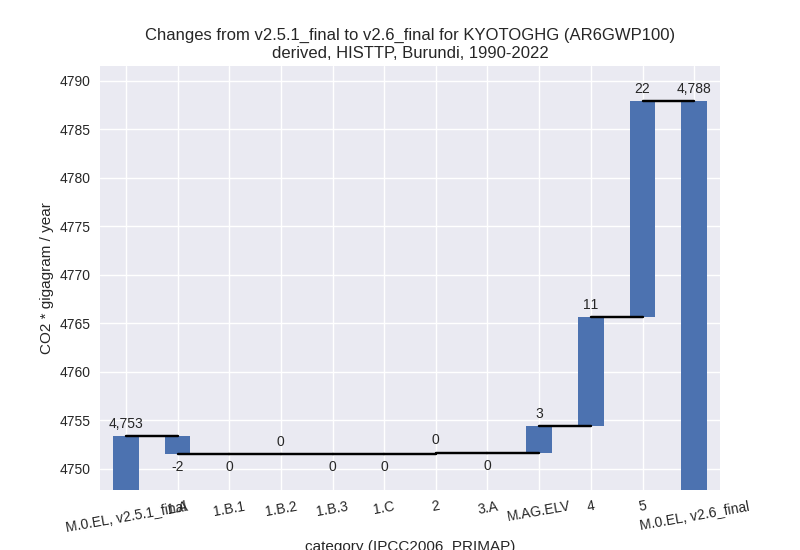
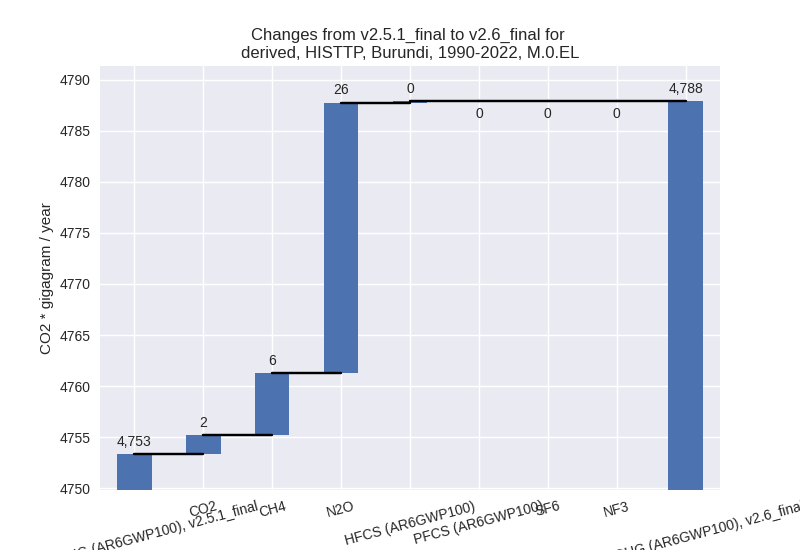
Detailed changes for the scenarios:
country reported scenario (HISTCR):
Most important changes per time frame
For 2022 the following sector-gas combinations have the highest absolute impact on national total KyotoGHG (AR6GWP100) emissions in 2022 (top 5):
- 1: 3.A, CH4 with 1088.72 Gg CO2 / year (304.5%)
- 2: M.AG.ELV, N2O with -583.67 Gg CO2 / year (-50.1%)
- 3: 1.A, CH4 with 449.59 Gg CO2 / year (42.2%)
- 4: 2, HFCS (AR6GWP100) with -291.05 Gg CO2 / year (-100.0%)
- 5: 1.B.1, CH4 with -278.81 Gg CO2 / year (-100.0%)
For 1990-2022 the following sector-gas combinations have the highest absolute impact on national total KyotoGHG (AR6GWP100) emissions in 1990-2022 (top 5):
- 1: M.AG.ELV, N2O with -353.96 Gg CO2 / year (-49.9%)
- 2: 3.A, CH4 with 349.61 Gg CO2 / year (80.8%)
- 3: 1.B.1, CH4 with -167.95 Gg CO2 / year (-100.0%)
- 4: 1.A, CH4 with 124.73 Gg CO2 / year (14.7%)
- 5: 2, HFCS (AR6GWP100) with -96.21 Gg CO2 / year (-100.0%)
Changes in the main sectors for aggregate KyotoGHG (AR6GWP100) are
- 1: Total sectoral emissions in 2022 are 2077.86 Gg
CO2 / year which is 46.0% of M.0.EL emissions. 2022 Emissions have
changed by 12.8% (235.03 Gg CO2 /
year). 1990-2022 Emissions have changed by -1.3% (-17.46 Gg CO2 / year). For 2022 the
changes per gas
are:
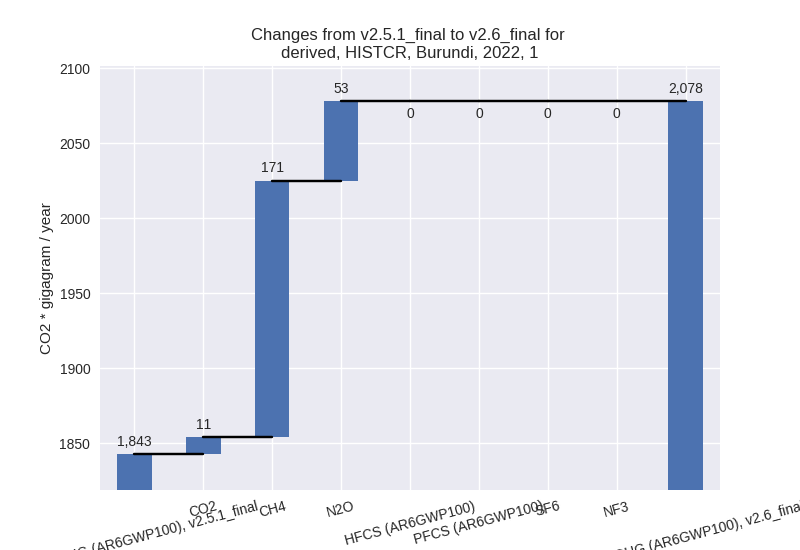
The changes come from the following subsectors:- 1.A: Total sectoral emissions in 2022 are 2077.86
Gg CO2 / year which is 100.0% of category 1 emissions. 2022 Emissions
have changed by 33.2% (517.54 Gg CO2
/ year). 1990-2022 Emissions have changed by 13.4% (152.72 Gg CO2 / year). For 2022 the
changes per gas
are:
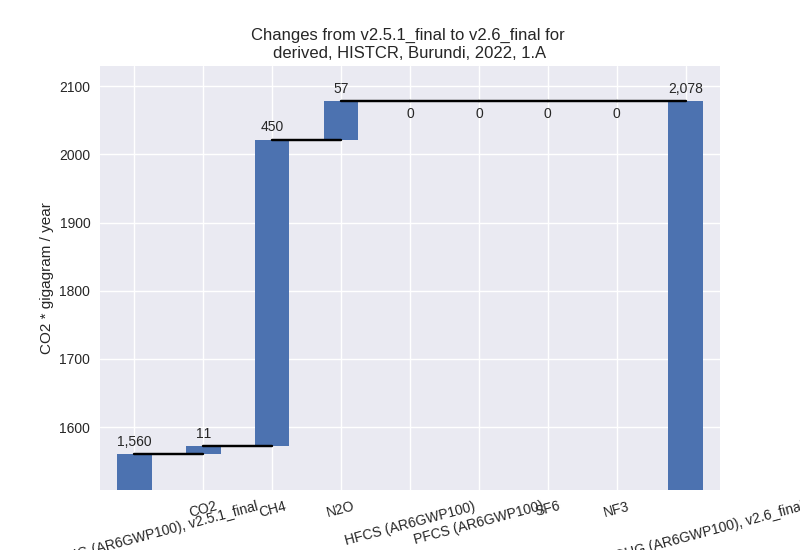
For 1990-2022 the changes per gas are: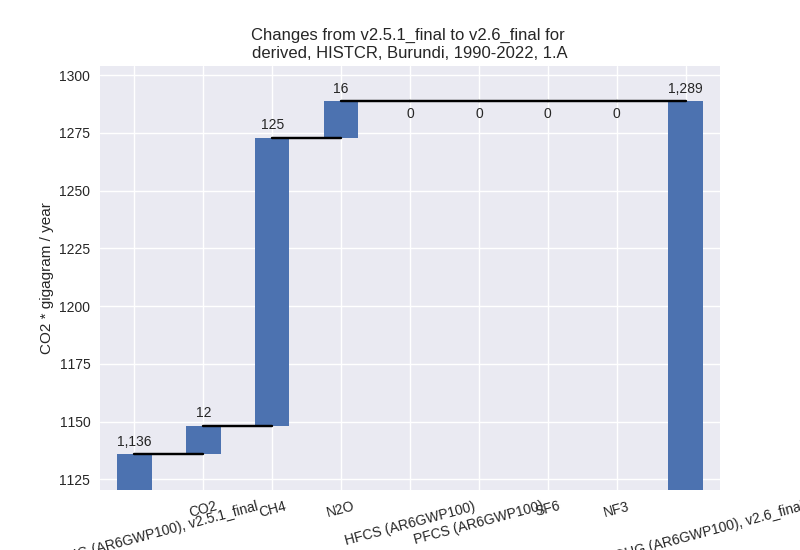
There is no subsector information available in PRIMAP-hist. - 1.B.1: Total sectoral emissions in 2022 are 0.00 Gg
CO2 / year which is 0.0% of category 1 emissions. 2022 Emissions have
changed by -100.0% (-282.51 Gg CO2 /
year). 1990-2022 Emissions have changed by -100.0% (-170.18 Gg CO2 / year). For 2022
the changes per gas
are:
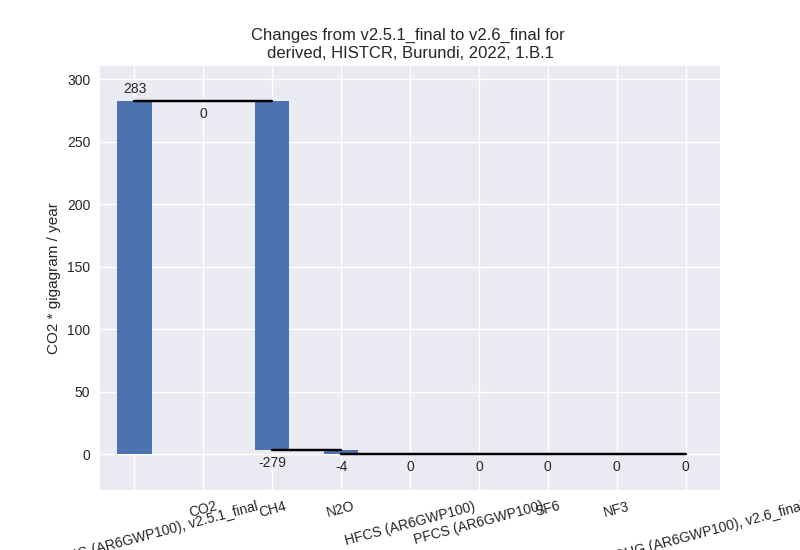
For 1990-2022 the changes per gas are: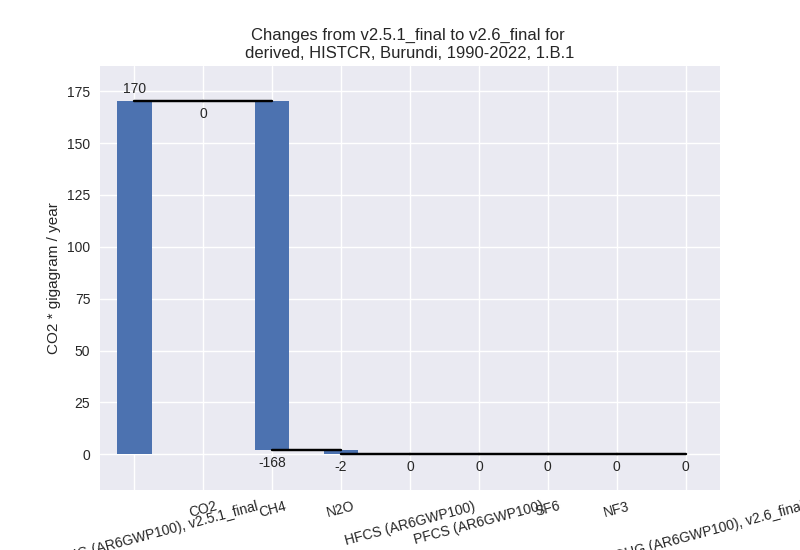
There is no subsector information available in PRIMAP-hist. - 1.B.2: Total sectoral emissions in 2022 are 0.00 Gg
CO2 / year which is 0.0% of category 1 emissions. 2022 Emissions have
changed by -100.0% (-0.00 Gg CO2 /
year). 1990-2022 Emissions have changed by -100.0% (-0.00 Gg CO2 / year). For 2022
the changes per gas
are:
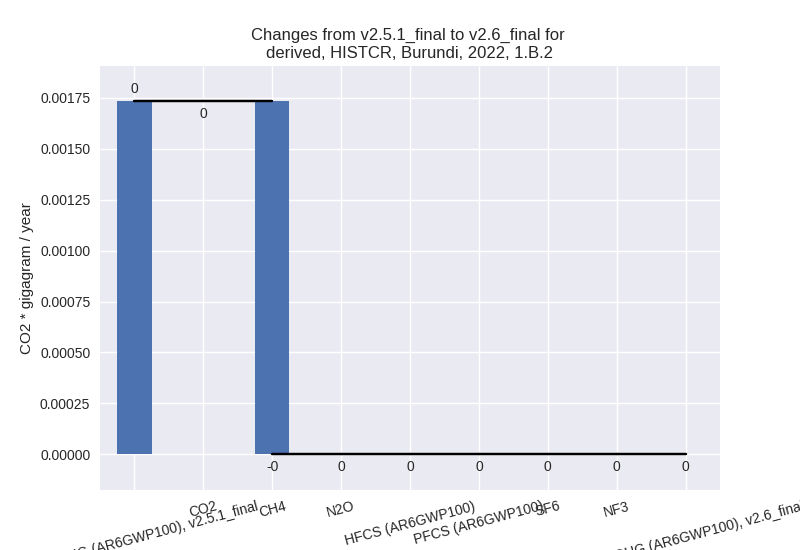
For 1990-2022 the changes per gas are: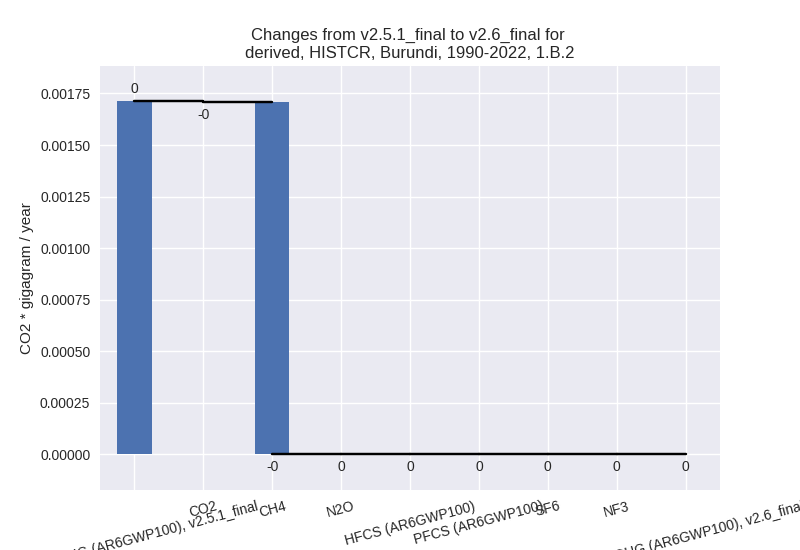
There is no subsector information available in PRIMAP-hist.
- 1.A: Total sectoral emissions in 2022 are 2077.86
Gg CO2 / year which is 100.0% of category 1 emissions. 2022 Emissions
have changed by 33.2% (517.54 Gg CO2
/ year). 1990-2022 Emissions have changed by 13.4% (152.72 Gg CO2 / year). For 2022 the
changes per gas
are:
- 2: Total sectoral emissions in 2022 are 4.50 Gg CO2
/ year which is 0.1% of M.0.EL emissions. 2022 Emissions have changed by
-98.7% (-355.53 Gg CO2 / year).
1990-2022 Emissions have changed by -98.3% (-121.30 Gg CO2 / year). For 2022
the changes per gas
are:
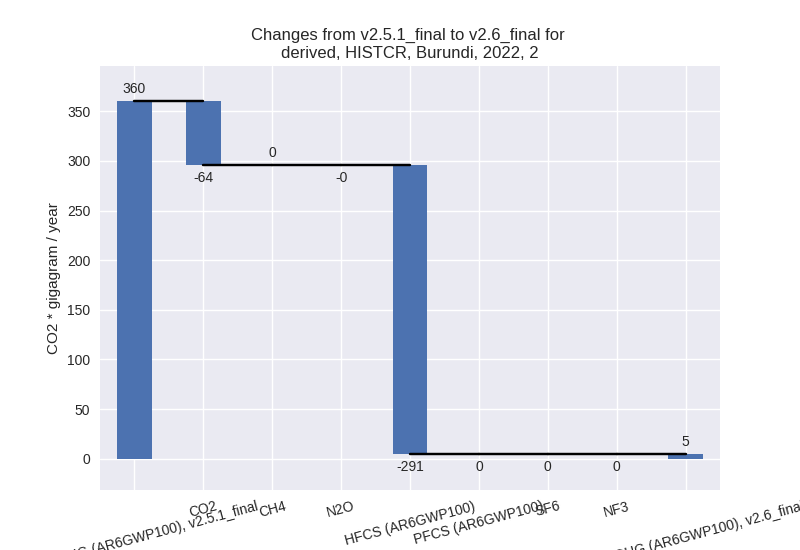
For 1990-2022 the changes per gas are: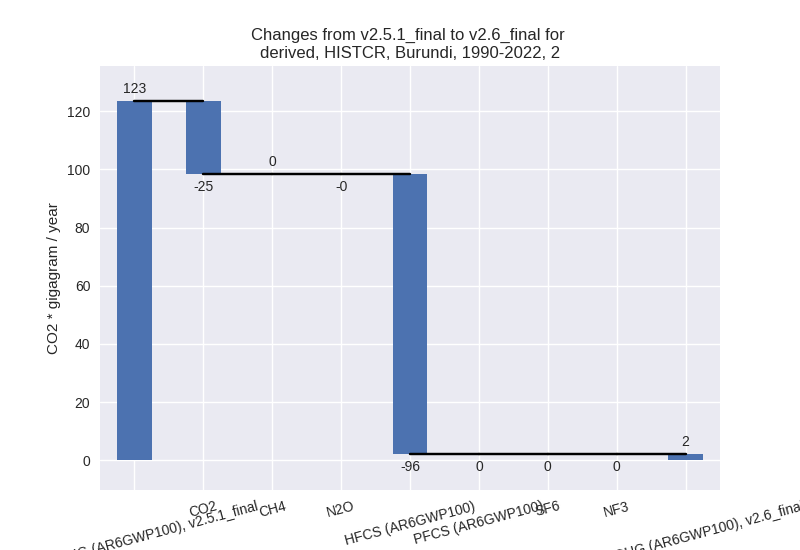
- M.AG: Total sectoral emissions in 2022 are 2394.59
Gg CO2 / year which is 53.0% of M.0.EL emissions. 2022 Emissions have
changed by 24.6% (472.07 Gg CO2 /
year). 1990-2022 Emissions have changed by -0.1% (-1.70 Gg CO2 / year). For 2022 the
changes per gas
are:
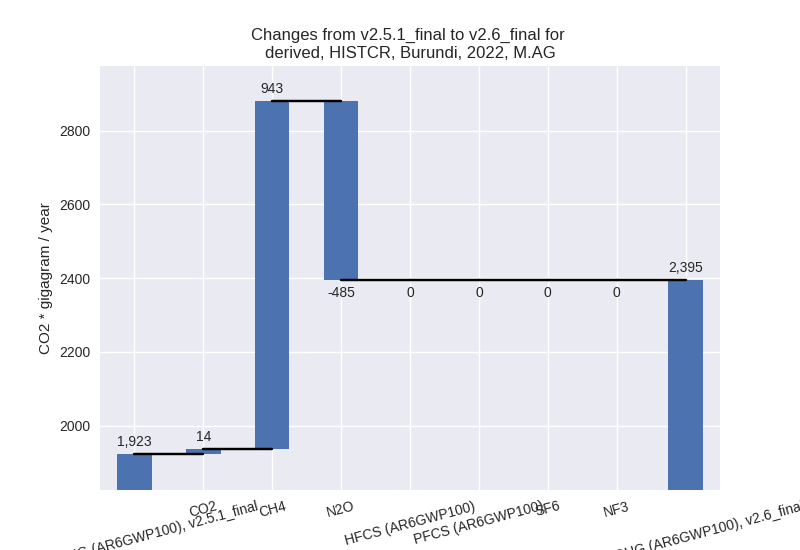
The changes come from the following subsectors:- 3.A: Total sectoral emissions in 2022 are 1666.68
Gg CO2 / year which is 69.6% of category M.AG emissions. 2022 Emissions
have changed by 247.9% (1187.67 Gg
CO2 / year). 1990-2022 Emissions have changed by 87.7% (416.31 Gg CO2 / year). For 2022 the
changes per gas
are:
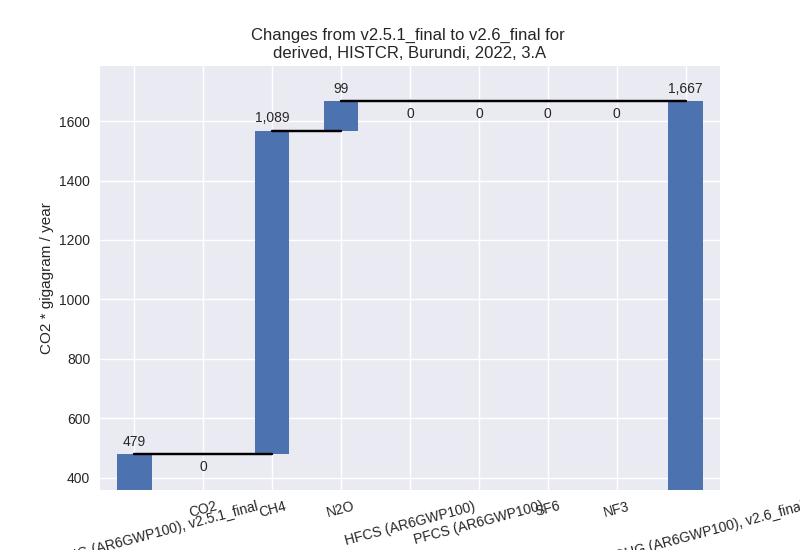
For 1990-2022 the changes per gas are: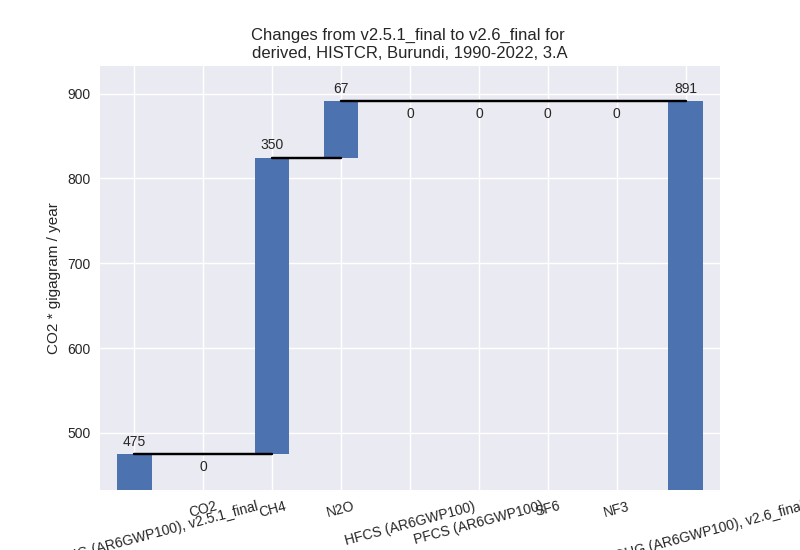
There is no subsector information available in PRIMAP-hist. - M.AG.ELV: Total sectoral emissions in 2022 are
727.91 Gg CO2 / year which is 30.4% of category M.AG emissions. 2022
Emissions have changed by -49.6%
(-715.60 Gg CO2 / year). 1990-2022 Emissions have changed by -46.7% (-418.02 Gg CO2 / year). For 2022
the changes per gas
are:

For 1990-2022 the changes per gas are: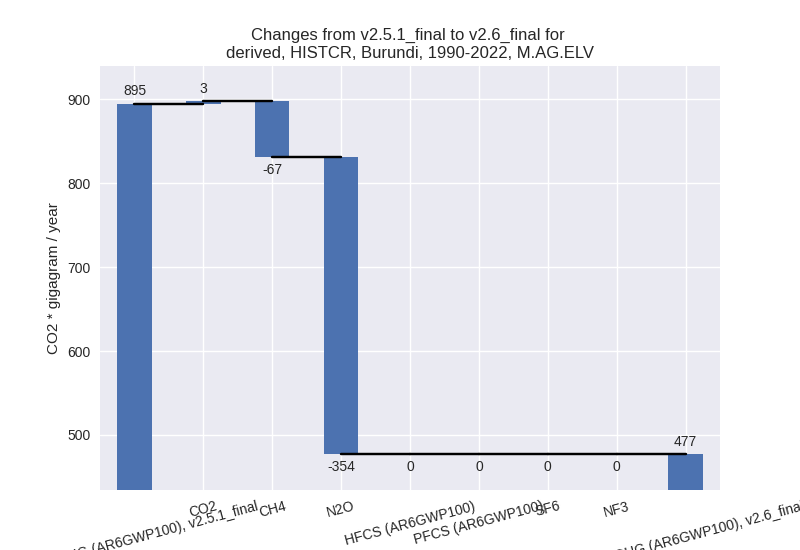
There is no subsector information available in PRIMAP-hist.
- 3.A: Total sectoral emissions in 2022 are 1666.68
Gg CO2 / year which is 69.6% of category M.AG emissions. 2022 Emissions
have changed by 247.9% (1187.67 Gg
CO2 / year). 1990-2022 Emissions have changed by 87.7% (416.31 Gg CO2 / year). For 2022 the
changes per gas
are:
- 4: Total sectoral emissions in 2022 are 39.51 Gg
CO2 / year which is 0.9% of M.0.EL emissions. 2022 Emissions have
changed by -85.7% (-236.73 Gg CO2 /
year). 1990-2022 Emissions have changed by -68.1% (-111.56 Gg CO2 / year). For 2022
the changes per gas
are:
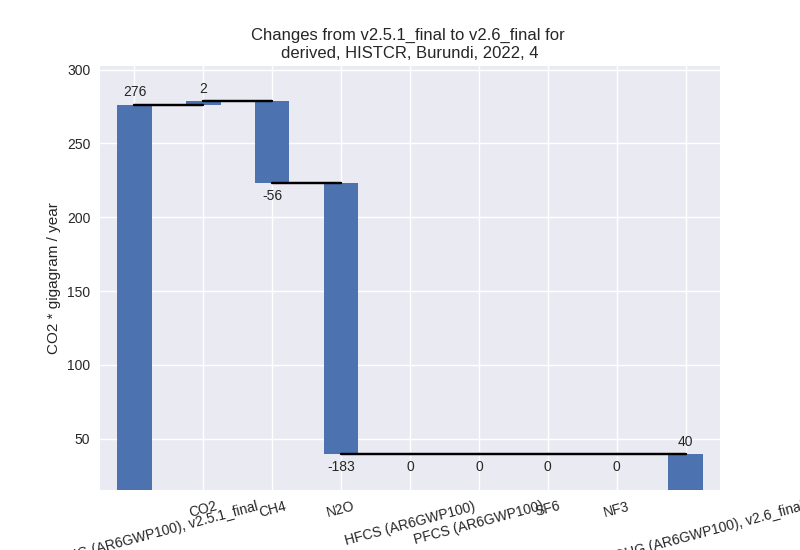
For 1990-2022 the changes per gas are: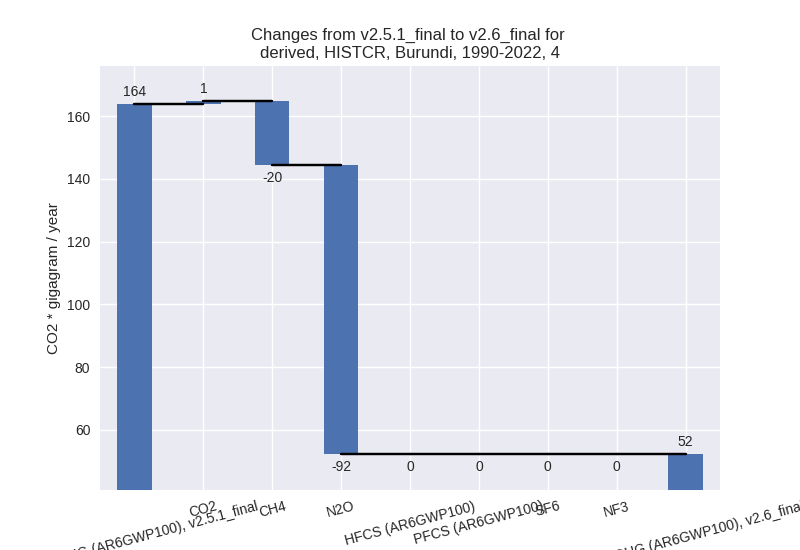
- 5: Total sectoral emissions in 2022 are 0.00 Gg CO2
/ year which is 0.0% of M.0.EL emissions. 2022 Emissions have changed by
-100.0% (-53.21 Gg CO2 / year).
1990-2022 Emissions have changed by -100.0% (-54.38 Gg CO2 / year). For 2022
the changes per gas
are:
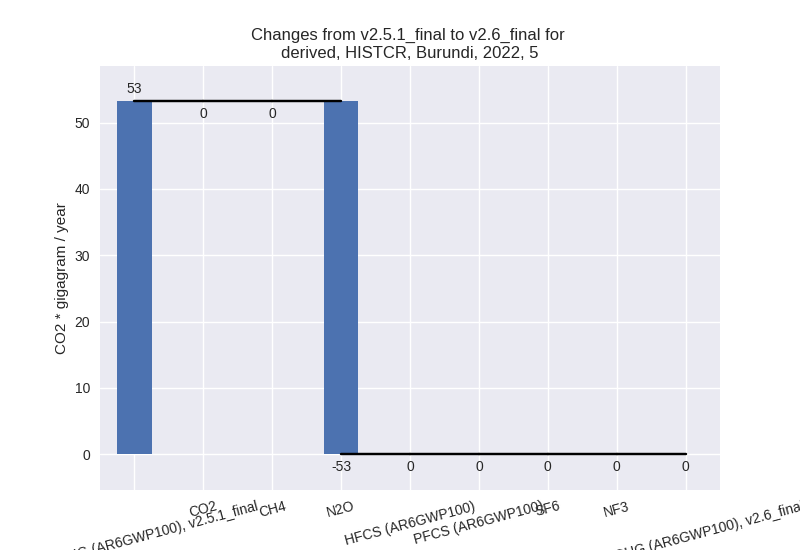
For 1990-2022 the changes per gas are: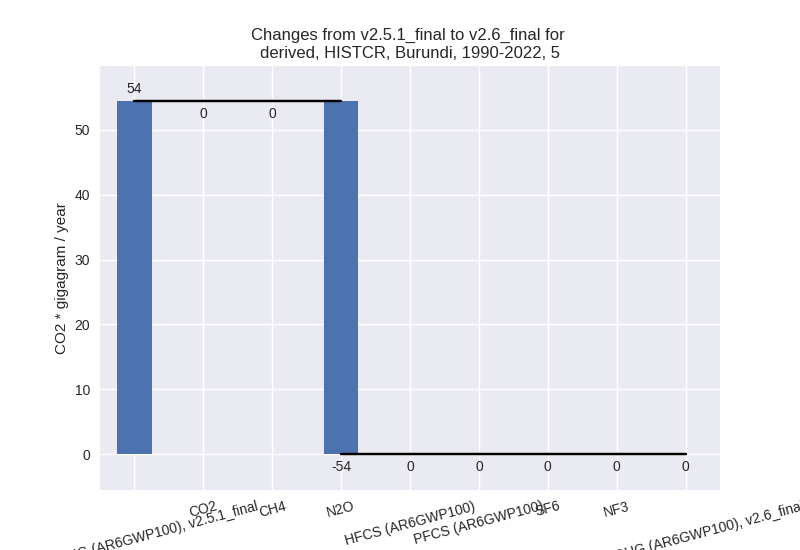
third party scenario (HISTTP):
Most important changes per time frame
For 2022 the following sector-gas combinations have the highest absolute impact on national total KyotoGHG (AR6GWP100) emissions in 2022 (top 5):
- 1: 1.A, CO2 with -59.56 Gg CO2 / year (-7.2%)
- 2: 5, N2O with 47.04 Gg CO2 / year (88.4%)
- 3: 4, CH4 with 44.71 Gg CO2 / year (2.6%)
- 4: M.AG.ELV, CO2 with 13.87 Gg CO2 / year (inf%)
- 5: 2, HFCS (AR6GWP100) with 4.26 Gg CO2 / year (1.5%)
For 1990-2022 the following sector-gas combinations have the highest absolute impact on national total KyotoGHG (AR6GWP100) emissions in 1990-2022 (top 5):
- 1: 5, N2O with 22.28 Gg CO2 / year (41.0%)
- 2: 4, CH4 with 6.06 Gg CO2 / year (0.5%)
- 3: 4, N2O with 4.22 Gg CO2 / year (6.5%)
- 4: M.AG.ELV, CO2 with 2.75 Gg CO2 / year (inf%)
- 5: 1.A, CO2 with -1.84 Gg CO2 / year (-0.6%)
Changes in the main sectors for aggregate KyotoGHG (AR6GWP100) are
- 1: Total sectoral emissions in 2022 are 2520.52 Gg
CO2 / year which is 32.1% of M.0.EL emissions. 2022 Emissions have
changed by -2.3% (-59.56 Gg CO2 /
year). 1990-2022 Emissions have changed by -0.1% (-1.84 Gg CO2 / year). For 2022 the
changes per gas
are:
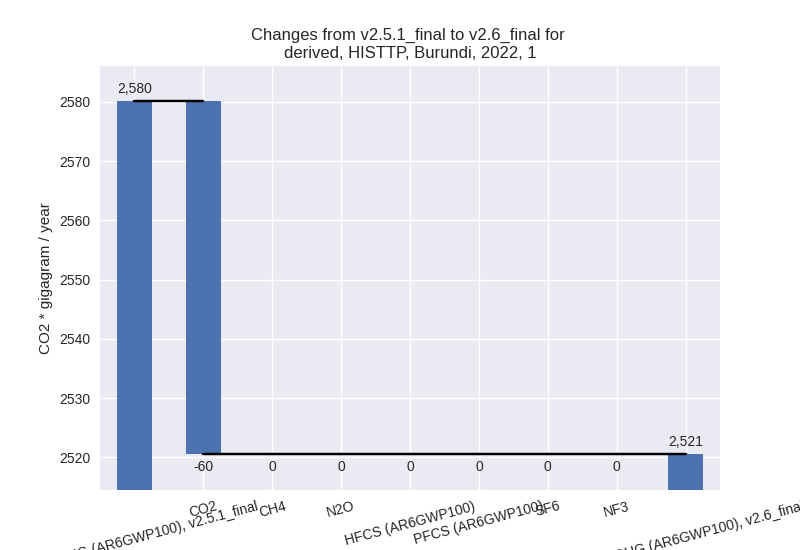
The changes come from the following subsectors:- 1.A: Total sectoral emissions in 2022 are 2238.01
Gg CO2 / year which is 88.8% of category 1 emissions. 2022 Emissions
have changed by -2.6% (-59.56 Gg CO2
/ year). 1990-2022 Emissions have changed by -0.1% (-1.84 Gg CO2 / year). For 2022 the
changes per gas
are:
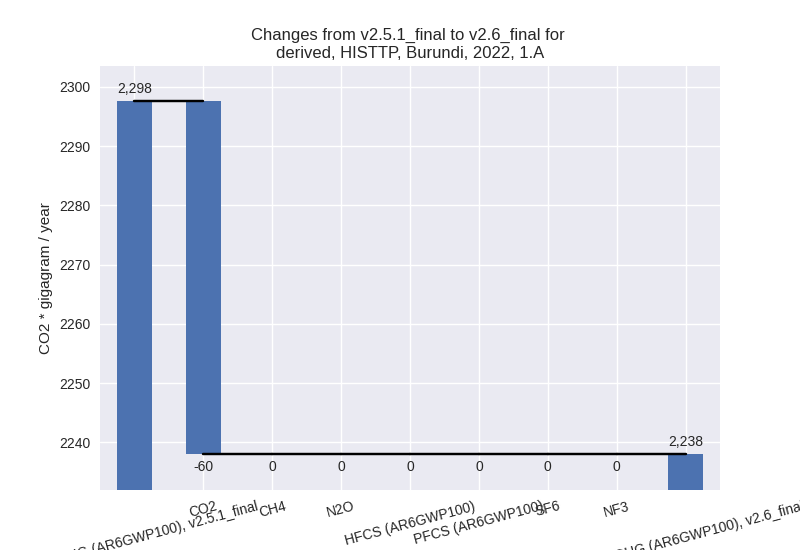
There is no subsector information available in PRIMAP-hist. - 1.B.1: Total sectoral emissions in 2022 are 282.51 Gg CO2 / year which is 11.2% of category 1 emissions. 2022 Emissions have changed by 0.0% (0.00 Gg CO2 / year). 1990-2022 Emissions have changed by 0.0% (0.00 Gg CO2 / year).
- 1.B.2: Total sectoral emissions in 2022 are 0.00 Gg CO2 / year which is 0.0% of category 1 emissions. 2022 Emissions have changed by 0.1% (0.00 Gg CO2 / year). 1990-2022 Emissions have changed by 0.0% (0.00 Gg CO2 / year).
- 1.A: Total sectoral emissions in 2022 are 2238.01
Gg CO2 / year which is 88.8% of category 1 emissions. 2022 Emissions
have changed by -2.6% (-59.56 Gg CO2
/ year). 1990-2022 Emissions have changed by -0.1% (-1.84 Gg CO2 / year). For 2022 the
changes per gas
are:
- 2: Total sectoral emissions in 2022 are 364.31 Gg CO2 / year which is 4.6% of M.0.EL emissions. 2022 Emissions have changed by 1.2% (4.27 Gg CO2 / year). 1990-2022 Emissions have changed by 0.1% (0.13 Gg CO2 / year).
- M.AG: Total sectoral emissions in 2022 are 2959.98 Gg CO2 / year which is 37.7% of M.0.EL emissions. 2022 Emissions have changed by 0.5% (13.87 Gg CO2 / year). 1990-2022 Emissions have changed by 0.2% (2.75 Gg CO2 / year).
- 4: Total sectoral emissions in 2022 are 1899.18 Gg
CO2 / year which is 24.2% of M.0.EL emissions. 2022 Emissions have
changed by 2.7% (50.76 Gg CO2 /
year). 1990-2022 Emissions have changed by 0.9% (11.21 Gg CO2 / year). For 2022 the
changes per gas
are:
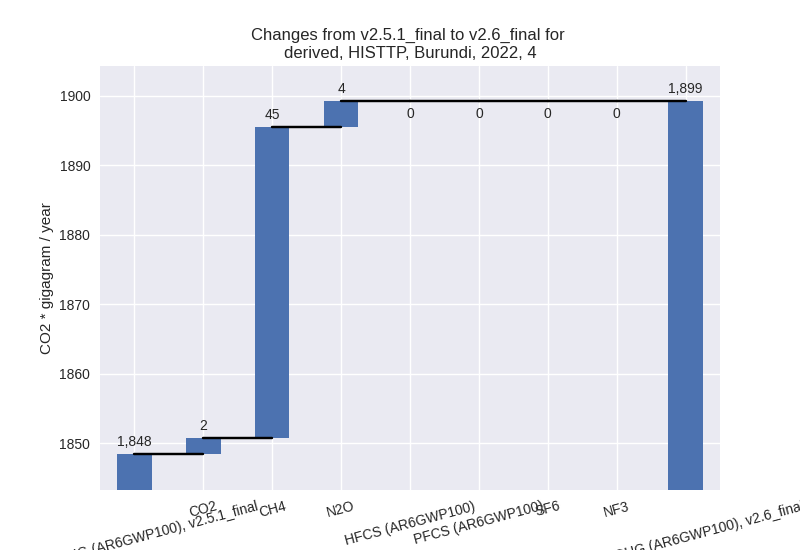
- 5: Total sectoral emissions in 2022 are 100.24 Gg
CO2 / year which is 1.3% of M.0.EL emissions. 2022 Emissions have
changed by 88.4% (47.04 Gg CO2 /
year). 1990-2022 Emissions have changed by 41.0% (22.28 Gg CO2 / year). For 2022 the
changes per gas
are:
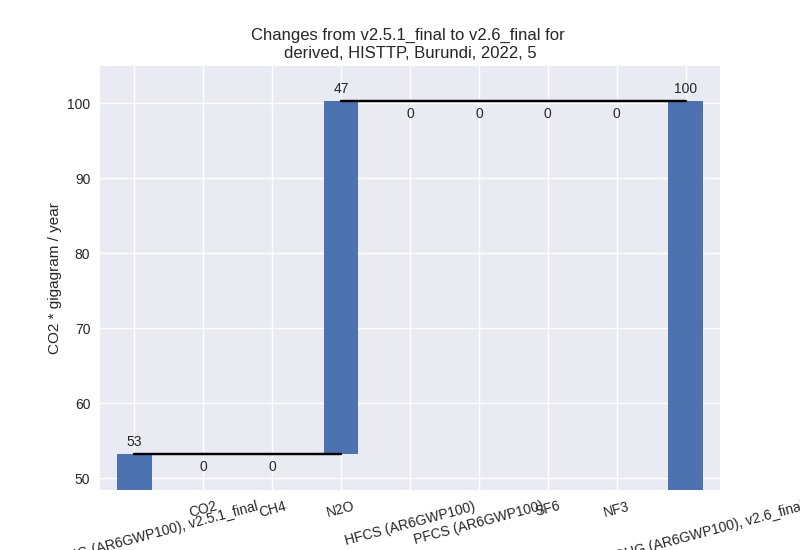
For 1990-2022 the changes per gas are: